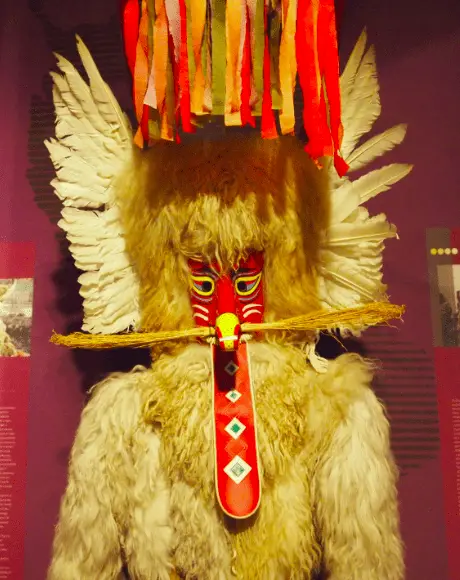Ljubljana related
STA, 25 April 2019 - Paintings, sculptures, prints, drawings, photographs and films created by more than 130 authors between 1929 and 1941 in the Kingdom of Yugoslavia will be displayed at the Moderna Galerija in Ljubljana until 15 September, 2019.
On the Brink: The Visual Arts in the Kingdom of Yugoslavia (1929-1941) provides an overview of the visual art from the start of the reign of King Alexander I on 6 January 1929 to the beginning of World War II in Yugoslavia in April 1941.
Divided into five sections, it deals with five topics through different works of art and presentations. The show, the gallery's most ambitious event this year, will be accompanied by more than 20 film screenings.
In the section exploring intimacy and the inner world, works by major Serbian and Slovenian painters are put on show, the second section is dedicated to landscapes.
The third section, focussing on contrasts, is the central part of the exhibition and features a painting by Serbian Petar Dobrović depicting journalists of the Danas magazine.
It also presents a clash on the left between Croatian writer Miroslav Krleža and Marko Ristić, a representative of Belgrade's surrealism.
The fourth section is dubbed People. According to curator Marko Jenko, this room is very chaotic, presenting people from cities and the countryside, mainly through reportage photography, which was very popular at the time.
The final part of the exhibition presents Yugoslavia's ties between the two world wars through the first two official presentations of the Kingdom of Yugoslavia at the Venice Biennale in 1938 and 1940.
According to Moderna Galerija director Zdenka Badovinac, the historical context of the period is presented through excerpts from a 1934 travelogue by Louis Adamič, The Native's Return.
Slovenian-US writer Adamič presented the complex situation in the kingdom at the time through his encounters with a variety of people, including Croatian sculptor Ivan Meštrović, Dobrović and Krleža.
He was also received by King Alexander I, one year before his assassination in Marseilles.
Adamič portrayed the Kingdom of Yugoslavia as a country on the brink, a country of stark contrasts, caught between old, premodern customs and the grip of capitalism, with a premonition of its imminent end in a broader European and global context, the museum of modern art says.
The exhibition is open until 15 September.
STA, 18 April 2019 - Slovenia boasts a rich heritage of Easter traditions, with some of them originating in the pre-Christian, pagan times. In the northern region of Koroška some of these traditions, unique to the region, are still preserved today although perhaps in a slightly more modern form.
Preparations for Easter, the biggest holiday in the Christian calendar, start two weeks before Easter Monday and the celebration continues until Low Sunday, the Sunday following Easter.
Many of the customs and rituals associated with Easter originate in the ancient Slavic mythology, with the Christianity only adopting them and adding Jesus Christ as the main figure and his resurrection as the reason for celebration, ethnologist Brigita Rajšter of the Koroška Regional Museum told the STA.
Some of the customs related to the main celebration of spring have died away, some have changed somewhat and many are still preserved in the region, she said.
How to make Slovenian Easter eggs
One such custom is the making of palms for Palm Sunday. In Koroška, the bundle of green branches and flowers is called pegl.
In some villages, people come together to make giant pegls, which reach more than 20 meters in length. Eight years ago, a record-long 34.7-metre pegl was made in Radlje ob Dravi.
In the past, children who ran with a blessed pegl around the house three times earned themselves a prize.
Traditionally, the branches from the palms were placed in gardens and fields to boost fertility. In the village of Črneče, children used to stick the blessed palms in the branches of their favourite tree.
One custom that is still alive today is the cleaning and tidying of homes and their surroundings during the preparations for Easter, which however have to be concluded by Wednesday before Easter. "Bringing order in disorder has a special meaning," Rajšter said.
Good Friday, observed by fasting, is the day when meals do not include any meat. On this day, women bake bread and traditional Easter deserts such as potica, šarkelj and pogača.
On Easter Saturday, the day starts with the blessing of the fire, which is used to smoke homes and stables. The torch with the blessed fire is then used to start a fire on which meat and eggs are boiled. In the evening Easter bonfires are lit.
While women and girls prepare the dishes for Eastern blessing, including ham, sausages, horseradish, coloured eggs, bread and various deserts, men and boys take care of the fire outside and set off makeshift mortars. It is an old custom imitating the cracking of rocks during Christ's resurrection.
In the past, when families were big, the oldest unmarried girl carried the Easter basket to church. They went on foot, carrying baskets on their heads. Traditionally, they decorated the basket with a bouquet, which they later used to decorate the table.
But not all dishes were allowed to be enjoyed as early on Saturday. Meat dishes could only be eaten after the morning mass on Sunday.
The traditional Easter breakfast in Koroška includes a boiled eggs salad, seasoned with horseradish, apple vinegar, pumpkin seed oil, salt and water. In the Mislinja area, ham and even potica are added to the mix.
While adults mostly look forward to Easter dishes, children used to eagerly anticipate Easter Monday, when they received Easter presents from their godfathers and godmothers.
In the past, these presents consisted of šarkelj with a coin in it, a coloured egg and possibly even an orange. Sometimes, the children would also get some new clothes.
Today, the custom is still very much alive. However, the presents have become much more valuable and could be a bicycle, roller skates or in-line skates.
Children would receive the present all the way to Low Sunday. In some parts of Koroška, some of the Easter dishes had to be preserved until then to repeat the Easter breakfast.
After Easter meals, families traditionally go out to play or take a trip together. Children used to play a very old game in which they divide themselves in two groups with those from one group asking the other how strong a bridge have they built.
Boys in particular liked to stage competitions involving eggs and coins. They would place the eggs on the ground and try to hit them with a coin. Whoever managed to get the coin stuck in the egg, won the egg.
In the village of Libeliče, five to ten boys would gather and put two narrow wooden boards on a small chair with a slot in the middle. They then rolled the eggs on it and then threw coins in them.
In Western Pohorje, children used to dig anthills to put coloured eggs in them and let ants "decorate" them with their acid.
April 1, 2019
In 2007 Slovenia celebrated the 50th anniversary of the death of Slovenia’s greatest architect, Jože Plečnik. In the same year an inter-ministerial commission was established to carry out the strategy of the protection of cultural and natural heritage, following the 1972 UNESCO recommendation and other legal international commitments for preservation of civilizational achievements.
One of the stages of this process was to prepare a preliminary list of potential world heritage candidates, and in this process all of Plečnik’s work in Ljubljana was declared cultural heritage of national importance in 2009, hence becoming a possible candidate for UNESCO civilisational heritage protection list. In his lifetime Plečnik’s architecture marked several of Central European cities significantly, in particular Ljubljana and Prague. Since the international positioning on the works of the 20th century is pretty much unclear at the moment, so is the process of recognising Plečnik's work, which was submitted for evaluation in 2015, including one work in Prague and a colleciton of works in Ljubljana.
Regardless of the civilisational prospects of Plečnik’s nomination for UNESCO status, his entire Ljubljana work was declared cultural heritage and of national importance in 2009, and part of that heritage is Central Bežigrad Stadium, the construction of which spanned over the second half of the 1920s and into the 1930s.
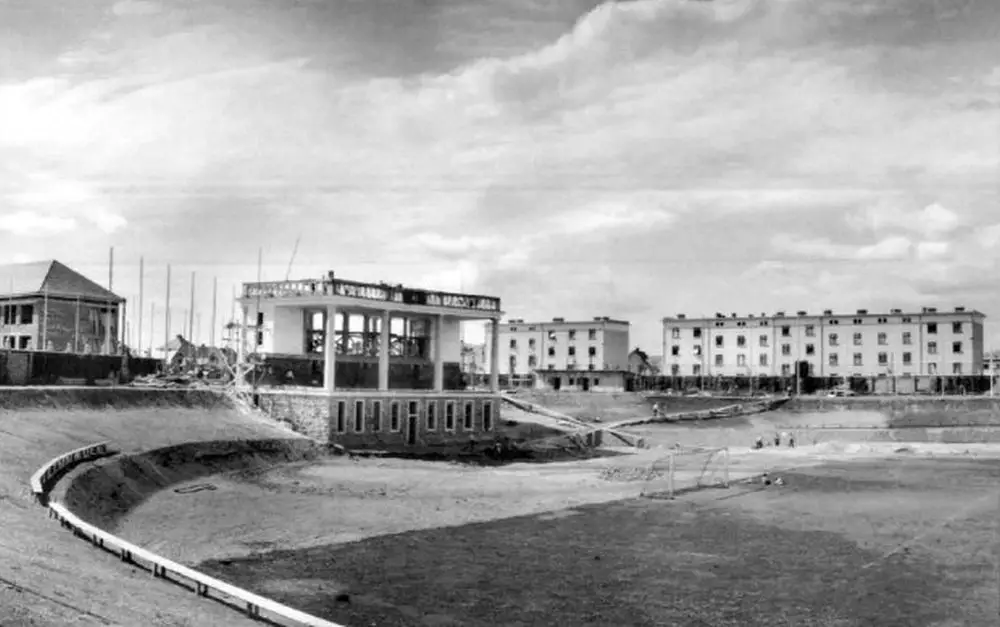
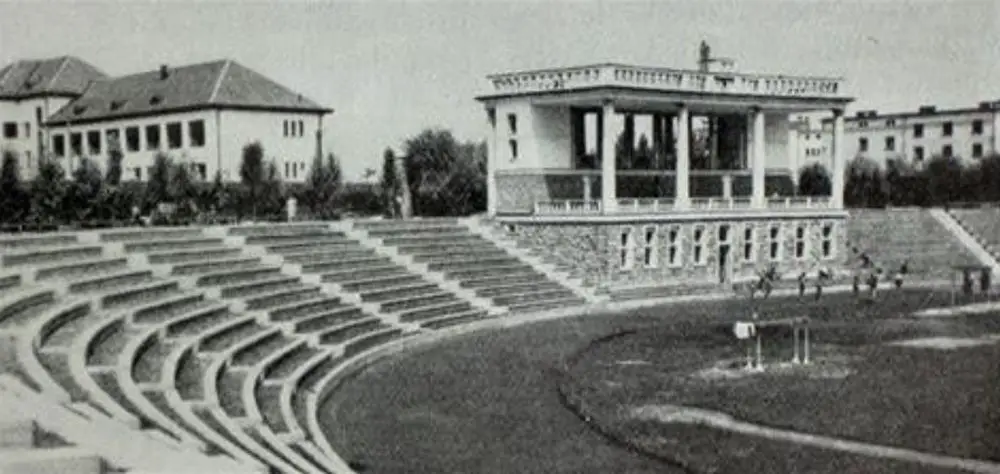
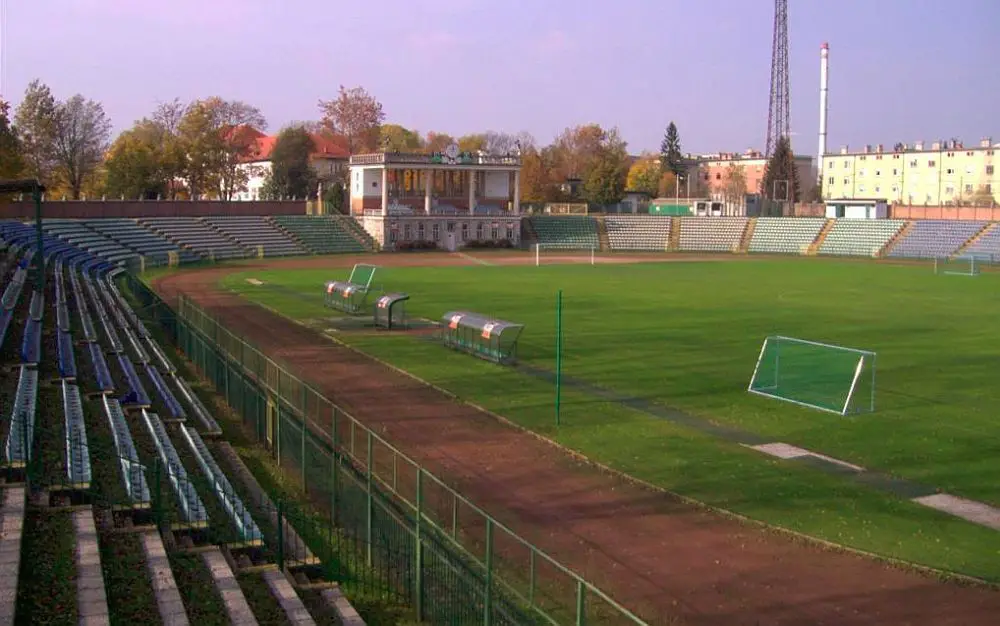
Moreover, in 2007 Ljubljana and Slovenia in general were suffering from the lack of a stadium that could host a major sports event and provide roofed tribunes for an adequate number of spectators. Providing the capital with such a venue was one of the 2006 local election campaign promises of Zoran Jankovič, Ljubljana Mayor since 2006.
In 2007 the city government of Ljubljana (MOL) found an interested investor for the reconstruction of Plečnik’s Stadium, a slot machine baron Joc Plečečnik, who also owned a gambling salon in Grosuplje and the Hotel Lev’s Casino until 2018, when they were sold to Austrian gambling giant Novomatic. According to Peter Rondaij’s open editorial for Dnevnik, Pečečnik’s interest in renovating the stadium was strongly related to his attempts at a Nevada (USA) non-restricted gambling licence, which would have been (and eventually was) granted to him on the condition of his general good track record that also involved a proof of active engagement in the field of culture.
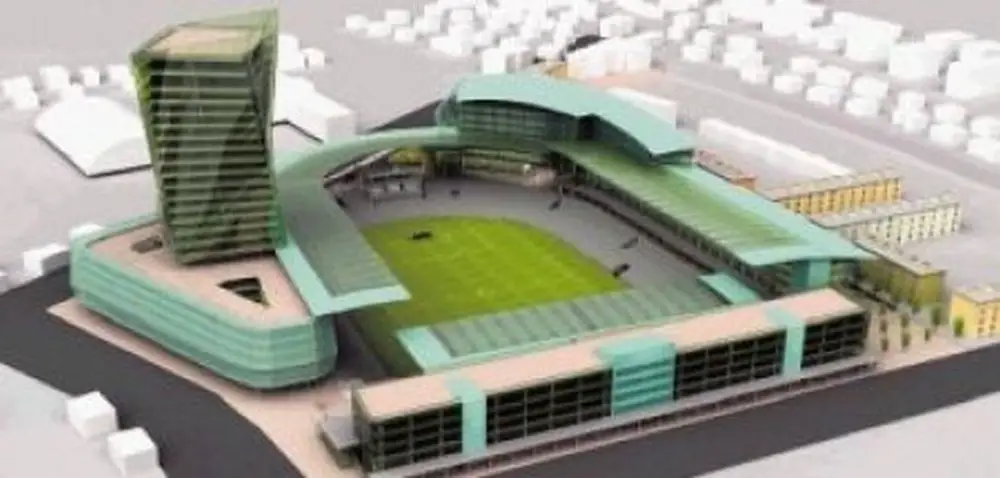

The winner of the public competition for the reconstruction of Plečnik’s Stadium 2009, designed by the German architectural studio GMP, was based on detailed urbanistic plans drawn-up by city Vice-Mayor Janez Koželj half a year later. The inspiration for the spatial planning seems to be heavily influenced by Pečečnik’s original plans for a skyscraper and a vast commercial area spreading deep underground. In the original plans five, not three, commercial buildings were intended by the northern wall of the stadium, currently hosting public gardens that have been in public use since the neighbourhood was built in the 1930s.
In October 2007, Bežigrad Sports Park Ltd. was established with the main shareholder being Pečečnik’s GSA (59%), the City Government of Ljubljana (28%) and Slovenian Olympic Committee (13%), the latter two contributing their shares in land. The property was immediately closed to the public using a construction fence and the project seemed to have proceeded without much need for either transparency or participation on the side of the public. Starting immediately after the fencing of the premises, citizens living nearby could only observe how the first thing to happen behind closed walls in December 2007 was the removal of floodlights and grass surface altogether, along with the drainage system. Part of a southern wall was demolished so that heavy trucks could get in and out. At the beginning of 2008, local residents also reported that all copper gutters and drain pipes has been removed from the gloriette, which was also reportedly deprived of its electric installations and then left with windows and doors open, which was done, according to speculation of the locals, to let vandals in so that they could destroy what the weather and time would not. According to Rondaij, this approach isn’t new. With “self-demolition” of protected buildings investors can clear a prime location for any development they want.
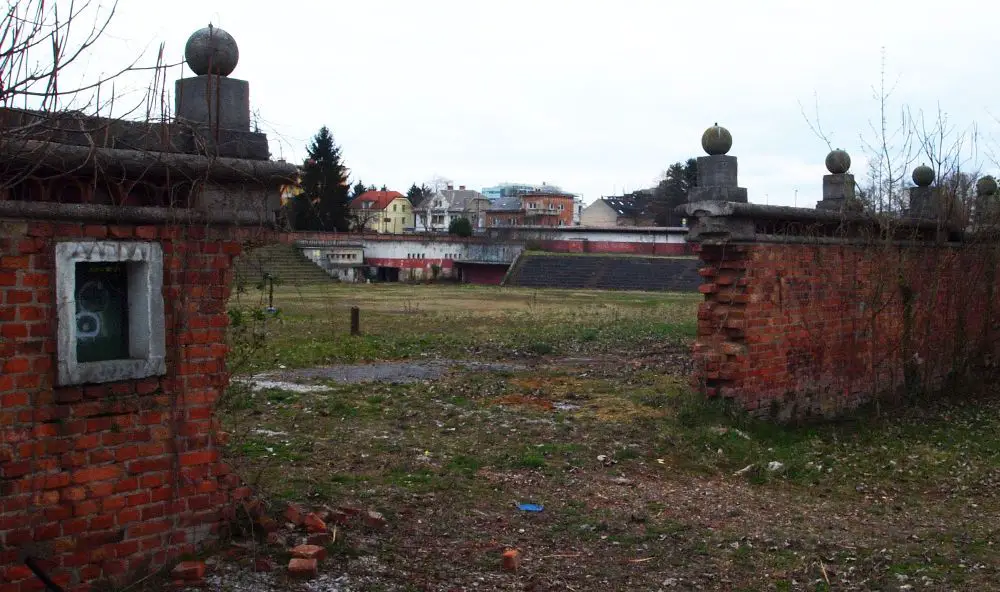
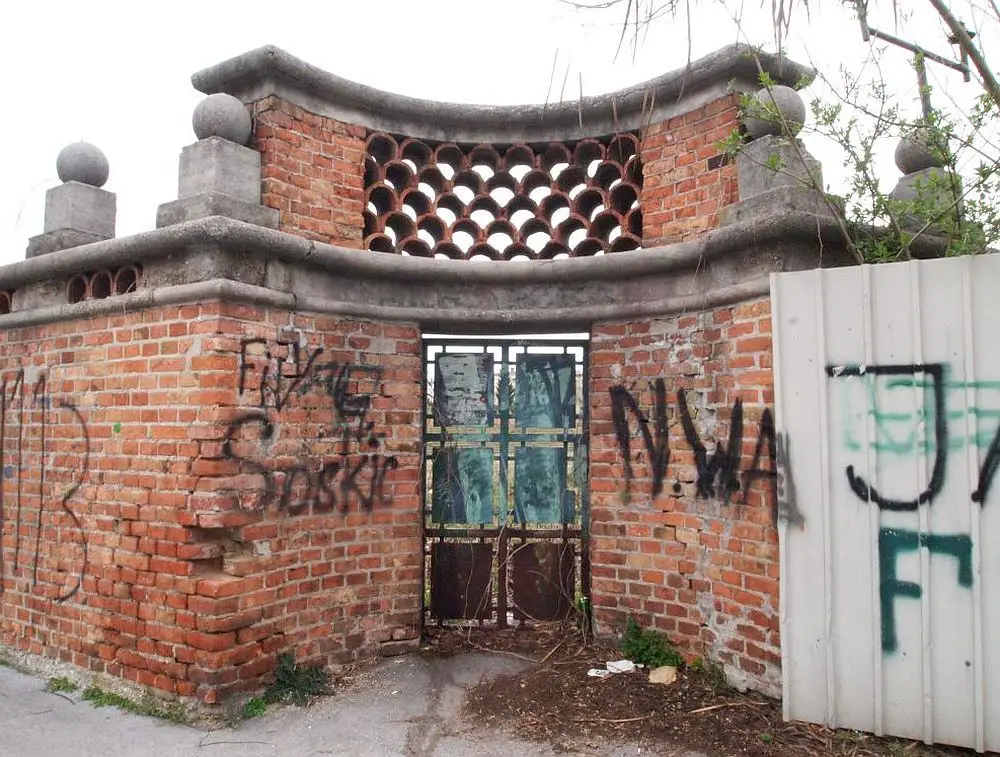
Meanwhile, in March 2008 an agreement was signed for another sports centre in a much more appropriate location for hosting masses of sports fans and concert goers. Right next to the highway ring-road of Ljubljana, a stadium and another roofed hall has already been completed and pretty much functional since 2010 in Stožice. With these facilities in place, the urgent need for a sports centre ceased to exist and the arguments for another such complex in the downtown area of a “green” capital that aims to replace dirty traffic with bicycle lanes and trees doesn’t seem to hold much water. Especially since this concrete moneymaking monster with several football field sized floors of parking lots is supposed to grow above and under a monument of protected cultural heritage.
The whole process seems to have taken a few shortcuts, one of them being the circumvention of the affected public, in particular the Fond community dwellers, who were left out of all discussions. In 2009 new spatial plans were shown to them which is how they learned that they would lose their gardens and views. The city government gave up the land as its 29% investment in Bežigrad Sports Centre Ltd. It was only from these plans, drawn up without alerting the general public, that one resident even found out that her house was set for demolition (source).
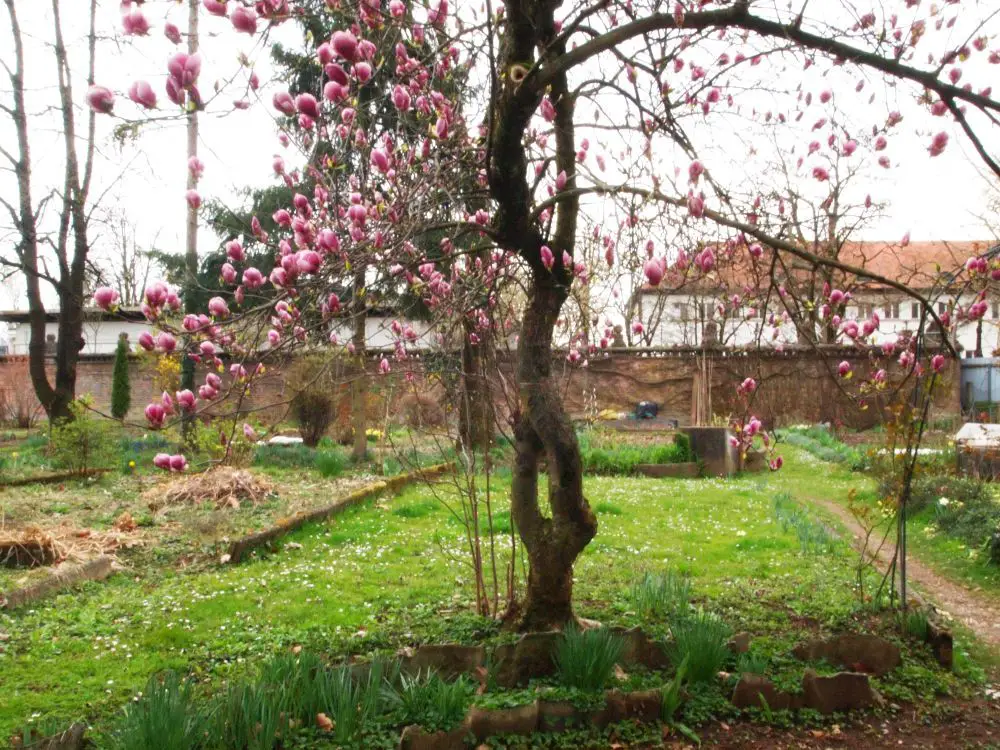
How a polarising project like this can continue to survive into the present is a mindboggling question. One of the explanations worth mentioning has been explored in detail in a graduation thesis, written by Danaja Visković Rojs. In short, the thesis contextualises the problem into the weak political culture of transitional societies, in which representatives lack the understanding of the nature of legitimacy of their governing jobs. Public participation in important decision-making processes, such as spatial planning, is a fundamental ingredient of democratic societies, something leaders of countries in transition to democracy find difficult to understand, instead taking their role of decision-makers as absolute. In return they lose the legitimacy of their political leadership, which they tend to compensate for with proofs of legality, exacerbating the conflict further.
In 2010 Zoran Jankovič, the Mayor of Ljubljana explained to Delo why the project continues to persis: while the city government contributed only land and wouldn’t lose anything by the contract ending, Joc Pečečnik invested money and would therefore lose €15 million if the project didn’t get through, which wouldn’t be fair to him. Which method of accounting brought Pečečnik to this number, Mayor Jankovič did not explain. The list of maintenance costs according to the official project’s website amounts to only €77,500. Yet the Mayor of Ljubljana seems to have a greater understanding for the interests of the city’s business partner, by now a “small king” of Las Vegas, rather than for the citizens who elected him.
Not surprisingly, in his interview for Delo Joc Pečečnik expressed great satisfaction with the city government’s collaboration, saying he has “no complaints” whatsoever. His take on Fond’s community protests, that are delaying the construction of the stadium, is simplistically legalistic with a neo-liberal newspeak definition of “public interest”: nobody has the right to interfere with his private property and it is the state’s duty to “protect the entrepreneur” and “allow him to create jobs and added value”. If someone out there wishes to use the stadium for “their own personal interest and (use it to) grow lettuce”, he has already offered to “buy his share for a very reasonable price”.
The city government and the Ministry of Culture told 24UR that they do not have the money to buy Pečečnik’s share. But do they even need to? They can simply leave the project and allow the lettuce continue to grow.
STA, 7 February 2019 - Choir conductor Martina Batič, composer Tomaž Svete, poet Jure Jakob, actor Maruša Majer, animated film maker Dušan Kastelic and architects Aljoša Dekleva and Tina Gregorič Dekleva will be honoured with the Prešeren Fund Prizes tonight for their accomplishments over the past three years.
Martina Batič is one of Europe's foremost choir conductors, collaborating regularly with celebrated choral ensembles such as the Swedish, Danish, Dutch and French national radios, the Eric Ericson Chamber Choir, and RIAS Kammerchor in Berlin.
Her "exceptional talent for shaping the choral sound earned her the appointment in 2018 as the artistic director and the Choeur de Radio France in one of the biggest breakthroughs for Slovenian musicians abroad," runs the praise that Batič will hear at the award ceremony tonight.
Her repertoire includes choral and oratorial music of most styles and historic periods, spanning from the Renaissance to the latest trends, and comprising most demanding compositions.
The prize jurors will also credit her for making it possible that Slovenian compositions are featured in concerts by foreign ensembles, and that new music by Slovenian composers is commissioned from abroad. "Her affinity for domestic composers is worthy of attention and praise."
A highly emotional moment for her was her inaugural concert with the Radio France Choir in November 2018 when she picked a Slovenian folk song, Pa Se Sliš, for the encore. "The French radio choir sung the song by heart with the students of the Veno Pilon secondary School in Ajdovščina", her home town.
Before her Paris engagement, Batič, 40, served for almost a decade as the artistic director of the Slovenian Philharmonic choir. She told the STA in an interview that a conductor needs to possess comprehensive expertise in various fields, including history, psychology and didactics, to be able to get the composer's message through to the audience.
Tomaž Svete, a 63-year-old composer, the author of ten operas, who is often praised for his uncompromising creativity is being honoured for his Concerto for Two Violins and Strings and his operas Ada and Antigone.
In the Concerto Svete "demonstrates his mastery of counterpoint, in rendering neoclassicist and neobaroque associations into subtle personal, expressionist reflections".
The piece was commissioned by the Kyiv Camerata, as an initiative in response to developments in Ukraine. The tragedy of the developments in Ukraine has moved him, without him trying to take sides.
"I won't say I'm politically engaged, but because like every other artist I am deeply religious, generally and in the humanist sense, I'm never indifferent to contemporary developments," Svete has told the STA in an interview.
In the chamber opera Ada, Svete returns to his reflection on the economics of means of sound, while Antigone is a continuation of a series of reflexive opera creations based on antique motifs.
The idea of Ada is that art, when honest, is immortal. It was written for the play by Ivo Svetina which deals with the life of Ada Škerl (1924-2009), the unrecognised poet, a pioneer of Slovenian intimist lyric poetry.
Antigone, written for Dominik Smole's interpretation of Sophocles' play, explores the heroine's being torn between whether to obey social norms or higher moral principles, a rift that Svete says extends to the Slovenian nation, which has still not buried its dead.
Jure Jakob, a 42-year-old poet has won the prize for his fifth collection of poetry Lakota (Hunger). He takes his motifs mostly from nature and from rural or suburban life.
"The tone of his voice has the quality of simplicity, clarity, precision and reliability of expression," the Prešeren Fund jurors will say.
"More often than not, Jakob's subject is a 'cough', dry, persistent and exhausting, painfully disturbing the quiet of an evening, a cough that cannot stop, that makes the effort but fails to achieve anything. The solution Lakota offers is to sustain, endure ... 'both hell and the sky'."
Jakob's motifs are to an extent related to his life-style, to his growing up in the countryside: "Rather than rich cities I visit humble, deserted villages, I walk in the woods more often than in the galleries. That's why a blackbird or an ant will find its way into my poem sooner than a car or a cyclist."
He says that a poem is meant to shed new light onto its subject matter, so that, regardless of its explicit theme, the poem should have a liberating effect, should "free us from the routine, automated, object-shaping imagining".
Considering that it is impossible to earn a living as a poet, Jakob says he is forced to compromise between his mission and his life. "I'm trying to be a surreal realist in my writing and a down-to-earth idealist in my life."
Jakob also writes essays and poetry for children. These have come out in three picture books, illustrated and initiated by his wife Anja Jerčič Jakob.
Maruša Majer has won the accolade for her internationally acclaimed portrayal of Mara, a young mother facing an impossible choice, in Ivan, Janez Burger's 2017 psychological drama, and several other theatre and film roles.
"The queen of the independent theatre scene, Maruša Majer broke through into the mainstream like a tsunami," the prize jurors say about the 34-year-old actor, a member of the SNG Drama theatre ensemble since 2018.
Perhaps her best known role is that of Veronika, an unemployed young woman from Maribor sharing her uncompromising views on current topics in weekly phone calls with a receptionist on TV Slovenija news magazine show Studio City.
Other prominent roles include the Borštnik award-winning role in The Bug, a play by Vladimir Mayakovsky, or that of an ambitious detective in the theatre crime series Praznina Spomina (Emptiness of Memory).
Majer, one of the European Shooting Stars at the 67th Berlin International Film Festival, takes an in-depth approach to each role, trying to adopt a new method each time; for Mara she internalised her biography, writing down her internal monologue during the shooting.
"I'm trying to give each role a new method, to avoid being in a straightjacket ... I find developing a method for each role one of the most exiting parts of my job. I believe that every person I want to portray demands to have its own."
The Box TRAILER from Dusan Kastelic on Vimeo.
Dušan Kastelic, an illustrator, comics artist and a pioneer of 3D computer animation, has earned the acknowledgement for his 2017 short animated film Celica (The Box), which has won him more than 50 awards at home and abroad.
The Box "is living proof that great works of art are not necessarily 'large', in this short, poetic but highly accessible film, the author speaks in his own unique and direct way about the individual's confinement in society's narrow confines".
His comic strip about the JBTZ military show trial, which first came out in instalments in the weekly magazine Mladina, in 1991 was one of the first globally to be made using a computer.
His first foray in the 3D animated film was the 2002 video clip for Perkmandeljc, a song by folk punk polka rock band Orlek, which went viral and caught the attention of Sundance producers, making it to the competition programme of the 2003 festival.
The Box was inspired by Kastelic's own nightmare, the product of his involvement with the group of environmental activists fighting against the waste incineration plant planned by the cement maker Lafarge in Zagorje.
"Half asleep I often dreamt up a similar scene that you can see in The Box. A dark place, an oppressive atmosphere with people rooted into the ground dozing off while I'm trying to tell them something but fail to wake them up."
Kastelic, 55, says that he has ideas enough for a lifetime, but it takes years to do the rendering, get the money and sort out the paperwork to make one short. His big desire is to make a feature-length film, but does not see any realistic chance at the moment, financially or organisation-wise.
Aljoša Dekleva and Tina Gregorič Dekleva of the Dekleva Gregorič architect studio are hailed for designing some of the finest examples of Slovenian contemporary architecture.
"They are distinguished by ingenious conceptual, technological and design innovation, refined restraint in their approach and sensitivity to cultural dimensions of living, to broader urban or natural landscape space, to the past and heritage."
Among their projects over the past three years, the Prešeren Fund jurors highlighted the Livada university campus building in the coastal town of Izola, Slovenia's pavilion for the 2016 Venice Architecture Biennale and the design of the 2017 exhibition on architect Stanko Kristl at the Ljubljana Museum of Architecture and Design.
"We do not consciously do architecture through which we would develop our own architectural signature or style, but all that we do depends on the environment we make it in and on the user we make it for," Aljoša Dekleva said in an interview with TV Slovenija.
The materials used in architecture are an important part of the story and message that the architecture makes, he said.
In designing houses, Tina Gregorič Dekleva says it is important how they are placed into the landscape and environment, with a sensibility for nature, colours, position, materials, and history.
It is also important how the architecture will affect those walking or driving by or how the view from a nearby hill.
STA, 12 January 2019 - After three months in office, Culture Minister Dejan Prešiček has told the STA that the Slovenian culture sector is successful and comparable with the production on the global scale despite the incomparable infrastructural and financial circumstances in which it functions. He would not change the culture financing model drastically.
"We are successful in all artistic fields. Music production is top-notch, theatre as well. We have individuals who have achieved world renown. This is positive and I'm very happy about the fact that there is a creative drive," the minister said in an interview.
The other thing is that those who work in their own country sometimes work in very difficult conditions compared with global production, which is also better financed, but nevertheless Slovenian artists keep making top achievements, he added.
As a minister, he sees his role in improving these conditions, but he is not inclined to making "major shake-ups" of the culture financing model.
"The system as it is should not be drastically changed. My opinion is that it needs to be only evaluated, and we should find out what is good and what does not function, and what is perhaps somewhat obsolete," Prešiček said in comments that are likely to sit uneasy with freelance artists, who have complained for years about inadequate financing.
He believes, however, that Slovenia lacks a clear strategy of development of culture. "In order for institutions to function well, we need standards, including for costs," he said, adding that talks about that were already under way.
Asked about the criteria for awarding the formal status of an artist, Prešiček said that artists provided society with such an added value that one could not say that there were too many of them.
"Artists think, they are critical of society and contribute to its development. Their social status and how much money the state earmarks for them is another question," he said, adding that the state could perhaps be stricter in awarding statuses, which sometimes come with paid social contributions.
Regarding the situation in culture, he said that with the technological and social progress, arts were being changed significantly as well. "For some arts adjusting to the new social circumstances is easier, for others it is harder."
The minister is convinced that the existing model of financing of culture could be an example to many countries with larger financial potential considering the importance of culture in society and the results it scores.
But Prešiček thinks that it is "so fragile" that hasted and major changes would bring more harm that benefits.
According to him, there is no shortage of ideas and tasks for the four-year term, which include the status of members of non-governmental organisations and self-employed culture workers, with which the state "has failed to deal with at the systemic level".
The idea is to regulate this with a special law, he said, adding that the bill prepared by the opposition Left could serve as its first draft.
Talks with Prime Minister Marjan Šarec and Finance Minister Andrej Bertoncelj and within his party, the Social Democrats (SD), suggest that there will be some more money for culture in the emerging supplementary budget for 2019, he said.
"Culture should not be perceived as a cost, but as an investment and added value both in the economy and tourism. It is a global trend and we are also adopting it. You cannot offer only mountains and water to a tourist, but also content and a story."
When it comes to legislation, Prešiček announced for February a public debate on changes to the media act, which he said would be adapted to the current technological environment.
"The planned change which will probably be most controversial politically will be prohibition of instigation of inequality and intolerance and measures when something like this happens. Sanctioning violations is something completely normal in all democratic societies," he said.
STA, 12 December 2018 - Rihemberk Castle, a monument of national importance in the west of Slovenia, is to be renovated with the help of the Restaura project, which aims at encouraging private investment into public historical cities and buildings in Central Europe.
The castle opened to the public in June 2017, and was visited by some 8,400 people in some 100 days before being closed again.
The municipality of Nova Gorica would like to turn it into a tourist site accessible to a broad audience and a kind of development centre for the area.
Restaura project manager at the municipality Nataša Kolenc told the STA the castle should also present its story and premises in an innovative and creative manner.
When the municipality became the owner of the castle in 2014, renovation costs were estimated at EUR 8-10m.
Since it did not have the needed money nor was it possible to obtain funds from the EU's 2014-2020 budget, an opportunity opened up with Restaura, she said.
Neva Makuc from the Milko Kos History Institute explained that several Central European countries were faced with a lack of public funds to renovate cultural heritage sites.
Restaura, which started in 2016 and is to end in May 2019, encourages private investment into public historical buildings through a public-private partnership.
With a budget of around EUR 2.1m, it is part of the Central Europe 2014-2020 programme and co-funded by the European Regional Development Fund.
But Restaura does not provide funds for direct investments into the castle, it only facilitates that funds are secured from other sources.
Nova Gorica has some EUR 205,000 at disposal as part of Restaura for three years, of which some 31,000 comes from the municipal budget.
So far, all relevant documents for Rihemberk have been collected and studied and ideas discussed with stakeholders from the village of Branik, where the castle is situated.
Technical plans and documents needed for a public-private partnership are also in the making, while an option to host start-ups will also be checked.
The castle is currently in a state of "a secured construction site" with restoration works designed in the period from the 1960s to 1980s not completed yet.
Restaura brings together partners from Slovenia, Croatia, Slovakia and Poland, with the Polish city of Nowy Dwor Mazowiecki the lead partner.
STA, 29 November 2018 - Slovenia's bobbin lace-making, a traditional lace-making technique using special wooden sticks - bobbins, has made it to the UNESCO list of intangible cultural heritage.
The decision was taken on Thursday by the UNESCO Intergovernmental Committee for the Safeguarding of the Intangible Cultural Heritage, as it is meeting in Port Luis, Mauritius, the Slovenian Culture Ministry said in a release.
Slovenia formally nominated this special technique of making delicate lace in March 2017. The tradition is especially strong in the north-west, around Idrija, Cerkno and Škofja Loka.
In recent years, it has been revived and turned into a popular activity, with 120 associations and groups dedicated to lace-making around Slovenia.
In Idrija, there is for instance a bobbin lace-making school and the town also organises an annual festival dedicated to this craft.
In 2016, bobbin lace-making was declared cultural heritage of national importance, which is also a condition for nominations with UNESCO.
The nomination file was prepared by a number of institutions such as the Slovenian Ethnographic Museum and other museums from Idrija, Ljubljana and Škofja Loka, as well as associations and groups involved in bobbin lace-making.
The ministry considers the listing a special recognition of this art which has been handed down from generation to generation, binding children, adults and the elderly.
Bobbin lace-making used to be an important economic activity, for which reason it has survived, the ministry said.
Nowadays its role has changed to become a favourite pastime for retired women, children and youth, with men usually helping with making bobbin lace-making tools.
It is moreover an inspiration for fashion designers, industrial designers, contemporary visual artists and architects, and is used for plate decorating.
Bobbin lace is the fourth item of Slovenia’s cultural heritage on the list
The elements of the UNESCO list of intangible cultural heritage of humanity, the list of intangible cultural heritage in need of urgent safeguarding and the registry of best practices are deemed as significant bastions of humanity's intangible heritage, the highest honour for intangible heritage in the world.
The lists were established in 2008 when the 2003 Convention for the Safeguarding of the Intangible Cultural Heritage took effect. Slovenia ratified it in 2008 and set up the national registry of intangible cultural heritage the same year, which currently contains 66 units.
Slovenia's other entries on the UNESCO list of intangible cultural heritage are the door-to-door rounds of Kurents, a traditional Slovenian carnival costume, (since December 2017), the Škofja Loka Passion, the mass staging of an early 18th-century play (since December 2016), and since yesterday, dry stone walling, the ancient building method used in Slovenia, Cyprus, Greece, Bulgaria, Croatia, Italy, Switzerland, France and Spain.
Other stories about Slovenia’s cultural heritage are here
STA, 28 November - Dry stone walling, the ancient building method used in Slovenia, Cyprus, Greece, Bulgaria, Croatia, Italy, Switzerland, France and Spain, has been included on the UNESCO list of intangible cultural heritage of humanity.
The decision was taken in Port Luis, Mauritius, on Wednesday at a session of the UNESCO Intergovernmental Committee for the Safeguarding of the Intangible Cultural Heritage, the Slovenian Culture Ministry said in a press release.
The bid had been submitted by Cyprus together with the other eight countries in March 2017.
In Slovenia, dry stone building by stacking stones found in the soil when cleaning farmland without the use of adhesive materials was typical particularly in the Kras and Istra regions in the south-west.
Related: Explore Slovenia’s cultural heritage through 17 of its historic towns
Such walls were built to fence gardens, meadows, vineyards, graveyards or to separate land or roads. Often dry stone walls protected people's assets from wind and fire.
The skill was passed on from generation to generation until WWII. But then traditional farming was increasingly abandoned, so this building method fell into disuse and is now known only to generations born before the war.
Slovenia, Cyprus, Greece, Bulgaria, Croatia, Italy, Switzerland, France and Spain presented the most wide-spread traditional techniques of this type of building in their UNESCO bid and highlighted its common cultural meaning and functions in all of the countries involved.
The elements of the UNESCO list of intangible cultural heritage of humanity, the list of intangible cultural heritage in need of urgent safeguarding and the registry of best practices are deemed as significant bastions of humanity's intangible heritage, the highest honour for intangible heritage in the world stage.
Other aspects of Slovenia’s cultural heritage are already on the list
The lists were established in 2008 when the 2003 Convention for the Safeguarding of the Intangible Cultural Heritage took effect. Slovenia ratified it in 2008 and set up the national registry of intangible cultural heritage the same year.
Other Slovenian entries on the UNESCO list of intangible cultural heritage are the door-to-door rounds of Kurenti, a traditional Slovenian carnival costume, (since December 2017) and the Škofja Loka Passion, the mass staging of an early 18th-century play, which made it to the list in December 2016.
Another Slovenian bid is expected to be endorsed on Thursday after the country officially nominated in March this year bobbin lace making, a traditional lace-making technique using special wooden sticks - bobbins. The tradition is especially strong in the northwestern areas around Idrija, Cerkno and Škofja Loka.
A kurent costume in Ljubljana's Ethnographic Museum. Photo: JL Flanner
STA, 5 November2018 - With the United Kingdom being one of the key markets for Slovenian tourism, some 35 Slovenian companies and organisations are being promoted at London's WTM, a leading global event for the travel industry, which runs from Monday to Wednesday.
We are delighted to announce the iconic #Ljubljana Castle is our official #WTMLDN partner.
— Slovenia Tourism (@tourism_slo) November 5, 2018
The partnership is part of helping preserve the historic @Ljubljanskigrad, which has provided panoramic views of the city for 900 years.
⤵️Visit Stand EU1400 to learn more ? @WTM_London pic.twitter.com/Y9yHLlFFKq
Slovenia is being promoted under the auspices of the Slovenian Tourist Board (STO) as an attractive destination offering "five-star experiences".
A special emphasis is placed on culture, which is the main theme of the STO's promotional campaigns in 2018 and 2019.
The country's exhibition area, spreading on more than 175 square metres, features Ljubljana Castle as the main partner.
Related: 25 things to know about Ljubljana Castle
On Tuesday, the Slovenian pavilion will feature a meeting of Slovenian tourism industry representatives with British and global tour organisers plus global media.
Slovenian food will be served by chef Igor Jagodic and the author of the best article on Slovenia written this year will be declared.
Related: Get to know Slovenia’s cultural heritage through its 17 historic towns
STO director Maja Pak says that "as as one of the most important and globally recognisable fairs, the WTM is a unique opportunity to consolidate the existing and create new business opportunities as well as to connect with the tourism industry in the UK and wider."
Slovenia is recording a rise in arrivals and overnight stays by British tourists, according to Pak, who said that a 27% increase in arrivals was reported for the January-to-August period compared to last year.
Related: 25 reasons why you should never visit Slovenia
In 2017, British tourists accounted for 370,000 nights in Slovenia, whose tourist industry has posted strong growth over the past few years. They are mostly interested in the country's mountains, cuisine, ski resorts and culture.
See all of our TRAVEL stories here, and follow us on Facebook for the latest news and views from Slovenia
Get to Know the 17 Historical Towns of Slovenia
There are many ways to plan a trip around Slovenia and lenses through which to view it, and one way to explore the country is through its historic towns. But how to choose these in a land that’s got so many? One way is by turning to the work of the Association of Historical Towns (and Cities) of Slovenia (Združenje zgodovinskih mest Slovenije), a group that includes 17 mostly medieval towns sited around the country, each of which has its own story to tell, with the full list being Idrija, Jesenice, Kamnik, Koper, Kostanjevica na Krki, Kranj, Metlika, Novo mesto, Piran, Ptuj, Radovljica, Slovenske Konjice, Škofja Loka, Tržič, and Žužemberk.


